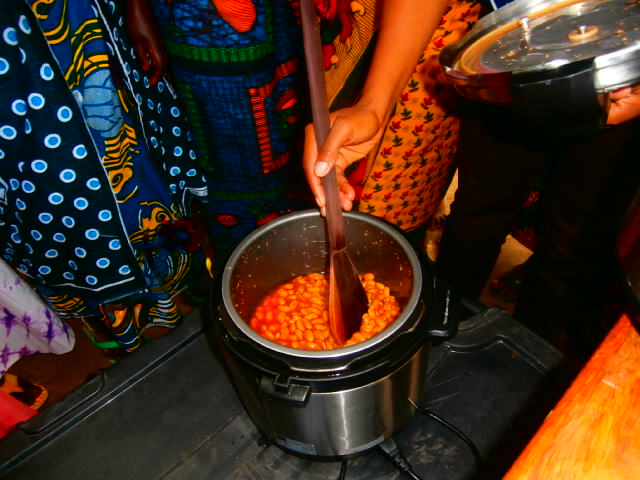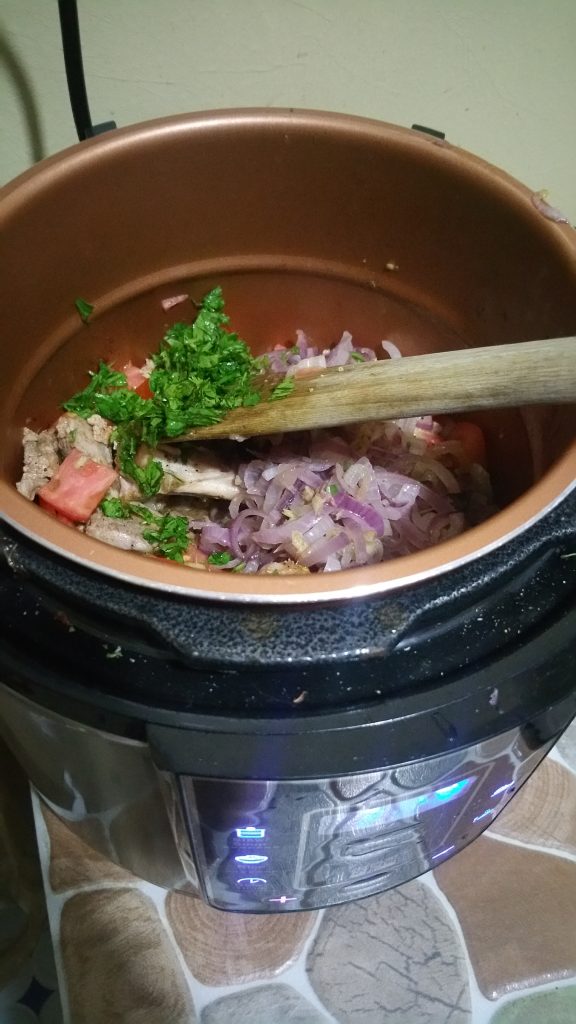
- Date
- 30th March 2023
- Categories
- Clean Cooking, Electric Cooking
By Maggie Moustache (Loughborough University)
I decided to focus my MSc dissertation on this topic as I noticed there were limited studies regarding cooking in institutional settings. I analyzed transcripts from interviews conducted with Indonesian schools to gather my data, the schools ranged from kindergarten to college level. In this blog I discuss the results of my research on the challenges that Indonesian schools are facing in accessing modern energy cooking services.
How are meals being cooked in the interviewed Indonesian schools?
The interviewed schools primarily use firewood and kerosene to cook their meals. The pace of transition to cleaner fuels varies across schools, as some have already switched from kerosene to LPG whilst others still heavily rely on firewood and currently look into the transition to kerosene.
Challenges that the schools are facing due to the lack of modern energy cooking
One of the challenges identified due to the use of traditional cooking fuels was that there have been adverse health implications on the cooking staff and students. For example, a large proportion of the interviews revealed that the cooks would experience red eyes and sweating while cooking with kerosene or firewood.
Secondly, Infrastructural damage is another challenge that the schools are facing due to the lack of modern energy cooking fuels and equipment. For instance, some interviewees stated that the smoke from the use of traditional fuels blackens the roofs of the kitchens. Additionally, other interviewees observed their kitchen’s roof cracking because of the heat. This creates additional costs for refurbishing the kitchens, however by adopting modern energy cooking, infrastructural damages like this can be avoided and money can be spent on purchasing modern energy cooking fuels instead.
Barriers impacting the adoption of modern energy cooking at schools
One of the barriers hindering schools accessing modern energy cooking is financial constraints. It was noted that some schools are ready for transition to modern energy cooking, but due to limited finances they cannot pursue the transition. This results in the staff and students using cheaper but unhealthy traditional fuels for cooking. A concern expressed by a few interviewees was that they had previously used LPG and would like to continue using it, but because of its cost they feel they are unable to do so, this can be seen in the quotation below:
‘We are actually ready to use modern energy, but we must also look at our budget. Our experience in using LPG is that as a fuel it is very expensive.’ (Interviewee 30)
Another barrier is safety concerns which were expressed amongst the cooking team in relation to the use of LPG. The fear stemmed from concerns over LPG explosions which some interviewees had seen on television (as can be seen from the quotation below by Interviewee 2). However, this suggests that there is misinformation and there needs to be greater education on safety measures to prevent LPG explosions and make staff feel more comfortable using LPG.
‘We do not use LPG because the cooking team is afraid that it will explode as they have seen several cases on TV where LPGs exploded.’ (Interviewee 2)

Other important barrier that was identified through my analysis of the interview transcripts, were cultural impacts. The interviewed school representatives expressed their views on how the use of firewood is part of their culture (as seen in the quotation by Interviewee 26 below). This can hinder the adoption of modern energy cooking in the schools as there may be resistance by the cooking staff who utilise traditional fuels in their own homes. Educational programmes aimed at educating the cooking team and students could help the transition to modern energy cooking by raising awareness of the dangers related to the use of traditional fuels.
‘Some say that cooking with firewood makes the food tastier, but probably it’s just because we are already used to firewood.’ (Interviewee 26)
Lastly, supply chain volatility was identified as an obstacle schools were facing in their access to modern energy cooking. During my research, it was noted that although some schools began the transition to modern energy cooking, such as using LPG, the volatility of the supply means they cannot completely rely on it for everyday cooking, hence encouraging stacking and using traditional fuels which have an easier supply chain such as firewood.
Conditions and investments that can help Indonesian schools to overcome these challenges
Based on my research findings, I suggest the below recommendations:
- Educational Programmes: I identified a need for educational programmes as it became evident that there was little awareness (amongst those interviewed in the schools) regarding the long-term health complications of using traditional cooking fuels. Thus, I suggested programmes to be implemented in schools facilitated by a local member of the community which could add credibility to the education being provided in these programmes. I used the World Education project in Ghana as an example, where they used ‘peer educators’ to convey the focus of the training. Such training would also help to reduce the accidents that occur due to misuse of LPG.
- Official Development Aid (ODA): Multilateral or Bilateral ODA can aid to train peer educators and enable educational programmes to take place. Additionally, I suggest that ODA can help establish Pay-As-You-Go (PAYG) systems in the local communities where schools are located. This enables the schools to purchase as much LPG as they need rather than a whole cannister which is often too costly. Thus, ODA would enable PAYG businesses to set up by providing initial financing. However, as I argue in my research, there would need to be monitoring frameworks in place to ensure the ODA is used efficiently.
- Microfinance: I recommended the use of microfinance to provide small loans to businesses to enable them to set up and create a supply chain and establish a market for clean cooking equipment in the areas surrounding the schools. This will help overcome the supply chain volatility that was discussed earlier, which could have further effects such as reducing fuel stacking amongst schools. I argue for the need of microfinance in my research, because providing clean cooking equipment to schools without a clear supply chain, would only work as a short-term solution and will not generate long term benefits as the schools will return to fuel stacking.
Featured Image Credit: TaTEDO (Tanzania Traditional Energy Development Organization).